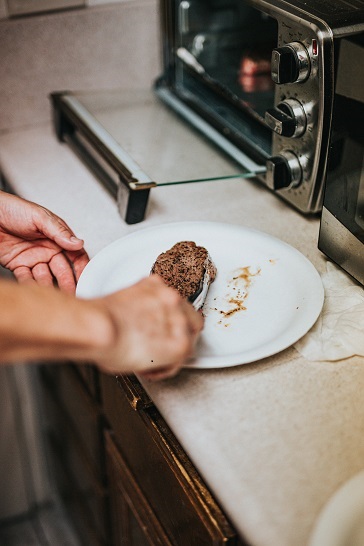A wireless meat thermometer is a powerful tool that can help prevent the common problems of overcooking or undercooking meat, ensuring that each dish is cooked to perfection. By following a few essential tips and utilizing the features of the wireless meat thermometer, you can achieve precisely cooked meat with confidence and consistency.

Measures
Here’s how to avoid overcooking or undercooking with a wireless meat thermometer.
1. Set the Target Temperature
Before cooking, determine the ideal internal temperature for the specific type of meat you are preparing. Different types of meat have different optimal doneness temperatures. Wireless meat thermometers often come with preset temperature settings for various types of meat, or they may allow you to customize the target temperature.
Set the desired temperature on the thermometer to achieve the desired level of doneness.
2. Insert the Probe Correctly
Properly insert the probe into the thickest part of the meat, away from bones or fat, to get an accurate reading. If the probe is not inserted deep enough or is touching bone or gristle, it may give inaccurate readings, leading to overcooking or undercooking.
3. Monitor Real-time Temperature
Take advantage of the wireless meat thermometer’s real-time monitoring capability. Keep an eye on the temperature readings as the meat cooks.
This allows you to gauge the cooking progress and intervene promptly if necessary.
4. Use the Preset Alarms
Wireless meat thermometers often have preset temperature alarms that can be set to alert you when the meat reaches the desired doneness.
These alarms can be especially helpful when multitasking or when the meat is cooking for an extended period. When the alarm goes off, it’s time to check the meat’s internal temperature for doneness.
5. Adjust Cooking Time and Temperature
If the meat is cooking too quickly or slowly, consider adjusting the cooking time or temperature. Lowering the heat or extending the cooking time can help avoid overcooking. Conversely, increasing the heat or reducing the cooking time can prevent undercooking.
6. Use Resting Time
After removing the meat from the heat source, it will continue to cook slightly due to residual heat. Allow the meat to rest for a few minutes before serving to even out the cooking and retain its juices.
The resting time is particularly important for larger cuts of meat, such as roasts or whole poultry.
7. Check Multiple Areas
For large or irregularly shaped cuts of meat, check the internal temperature in multiple areas to ensure even cooking. Different areas of the meat may cook at different rates, so taking several readings can help you identify any variations.
8. Familiarize yourself with Meat Types
Different types of meat have unique doneness preferences. Familiarize yourself with the optimal internal temperatures for each type of meat to achieve the desired result.
For example, beef steaks are often cooked to different levels of doneness (rare, medium-rare, medium, etc.), while poultry should always be cooked to a specific safe minimum internal temperature.
9. Follow Recipes and Guidelines
When cooking with a wireless meat thermometer, follow recipes and guidelines that provide recommended cooking times and temperatures for specific cuts of meat.
This will serve as a valuable reference and help you achieve consistent results.
10. Practice and Experience
Like any skill in the kitchen, achieving perfect doneness with a wireless meat thermometer takes practice and experience. As you gain familiarity with your thermometer and various types of meat, you’ll become more confident in achieving the desired level of doneness.

Conclusion
A wireless meat thermometer is a valuable ally in preventing overcooking or undercooking of meat. By setting the target temperature, inserting the probe correctly, monitoring the real-time temperature, using preset alarms, adjusting cooking time and temperature, using resting time, checking multiple areas, familiarizing yourself with meat types, following recipes and guidelines, and gaining practice and experience, you can confidently cook meat to perfection every time.
With the assistance of a wireless meat thermometer, achieving precise and consistent results is within reach, delighting diners with mouthwatering, perfectly cooked meat dishes.

